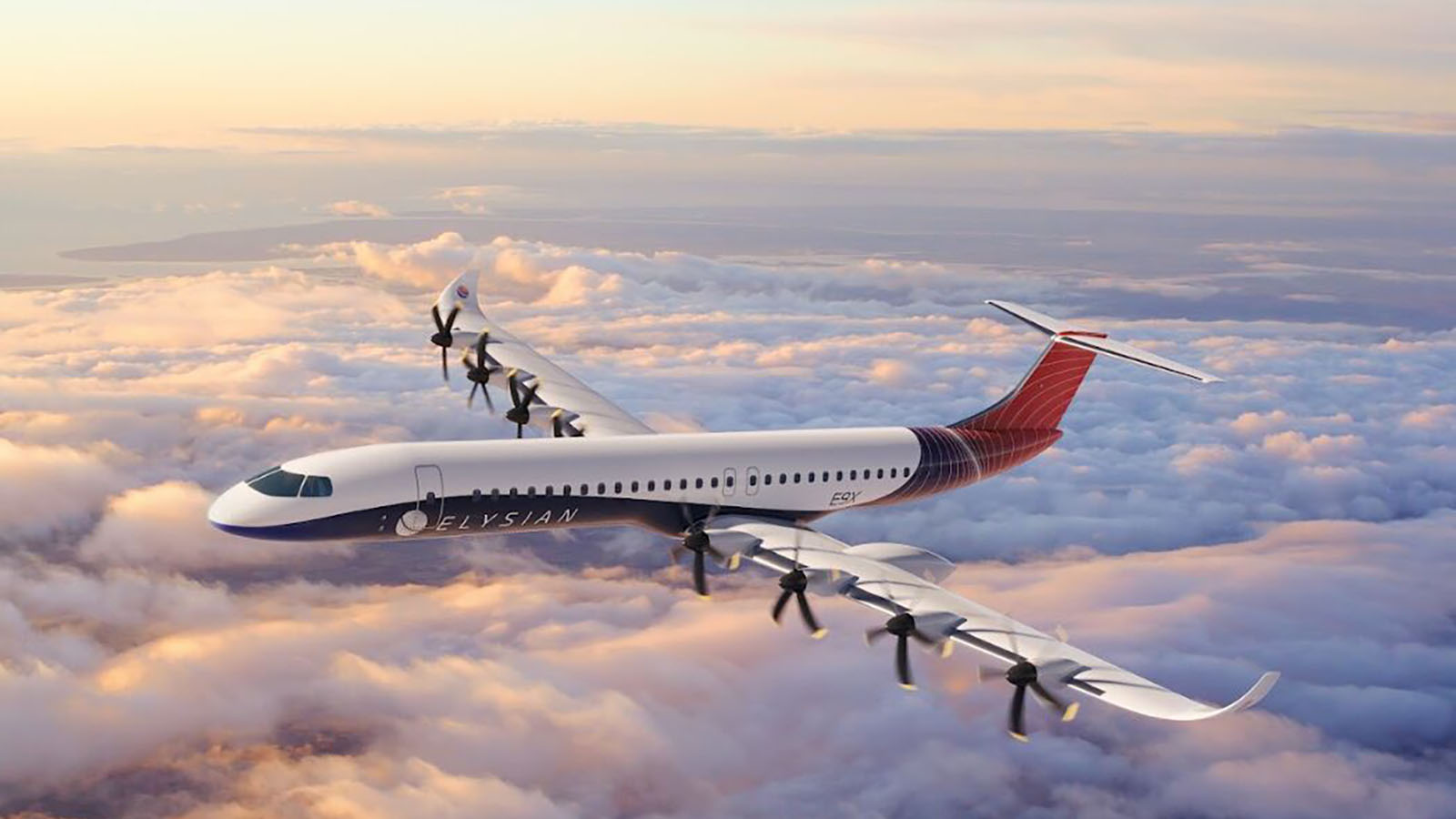Stay Up to Date
Submit your email address to receive the latest industry and Aerospace America news.
Elysian Aircraft reveals technical concepts underlying planned 90-passenger electric aircraft
AIAA SCITECH FORUM, Orlando, Fla. — Conventional wisdom says that future aircraft that will fly only on battery power, with perhaps a gas generator as a backup, won’t be able to carry many passengers very far — at least, not for decades.
Enter Elysian Aircraft, a five-person company based in Delft in the Netherlands, owned by Panta Holdings, which also owns Fokker Services, a provider of aviation equipment and services. Today, Elysian executives presented two interrelated technical papers describing their plans for a 90-passenger, prop-driven electric plane that would have a range of 800 kilometers, about the distance from San Francisco to San Diego, and enter service in 2033. Each aircraft would carry a fossil fuel turbogenerator in its tail cone to recharge the batteries and power the motors driving the propellers in the event a plane was diverted or delayed. The design is based on research from Delft University of Technology in the Netherlands.
A key to the design is the aircraft’s unusually wide wingspan, said Rob Wolleswinkel, Elysian’s co-CEO and chief technology officer, in an interview with me. Plans call for a 43-meter span. That’s about 7 meters wider, for example, than the span of a Boeing 737 MAX 7 jet, which can carry up to 172 passengers.
The wider span will provide plenty of space inside the wings to hold the batteries, Wolleswinkel said. “That means the fuselage itself isn’t bearing the extra mass of the batteries.” That point is elaborated on in the paper, “A New Perspective on Battery-Electric Aviation, Part I:
Reassessment of Achievable Range,” presented today by Wolleswinkel, and in a second paper, “Part II: Conceptual Design of a 90-Seater.”
Putting batteries in the wings “offers many benefits over battery placement in the fuselage: reduction of wing bending moment, utilization of the available wing space and reduction of the required fuselage space,” according to the paper presented by Wolleswinkel.
Through the papers, Elysian is describing “a combination of aerodynamic effects, which keeps structural mass as low as possible and has a low-wing configuration — meaning we place the wings in the lower half of the fuselage,” he said.
At least one other company developing an electric aircraft, Joby Aviation in California, has placed batteries in the wings, but the company has said that was done for safety — to keep them away from passengers in the event of a battery fire. When asked about Joby’s design, Wolleswinkel told me that the safety benefit is an added advantage.
For the Elysian aircraft, the ends of those long wings will be foldable because 43 meters is too wide for the design to be parked at a standard airport gate, the company said in a press release.
The company plans to install lithium-ion batteries with “energy densities” up to 360 watt hours per kilogram, according to the Part II paper, and says it has consulted with several battery manufacturers who said they can easily meet the demands of the plane as described by Elysian. The company’s owner, Panta, invests in several battery companies, co-CEO Daniel Rosen Jacobson told me.
Jacobson, who is also Elysian’s chief business officer, said the company intends to manufacture and sell the planes initially, though it may move to licensing its technology later on.
With so few employees at the moment, the company must “keep costs manageable” as it works to refine the design, Jacobson said. But researchers at Delft are working on projects to develop the technology and reduce risks, he added.
Get the latest news about advanced air mobility delivered to your inbox every two weeks.
About paul brinkmann
Paul covers advanced air mobility, space launches and more for our website and the quarterly magazine. Paul joined us in 2022 and is based near Kennedy Space Center in Florida. He previously covered aerospace for United Press International and the Orlando Sentinel.
Related Posts
Stay Up to Date
Submit your email address to receive the latest industry and Aerospace America news.




